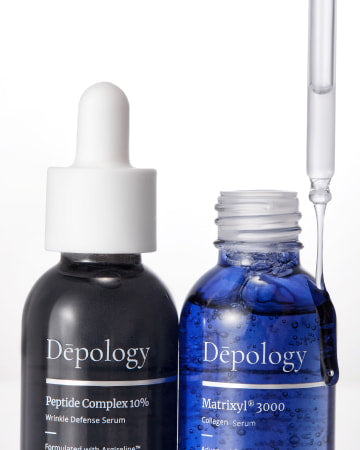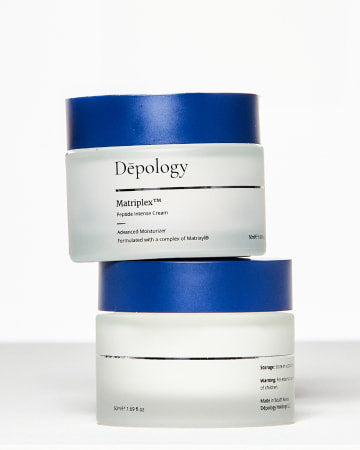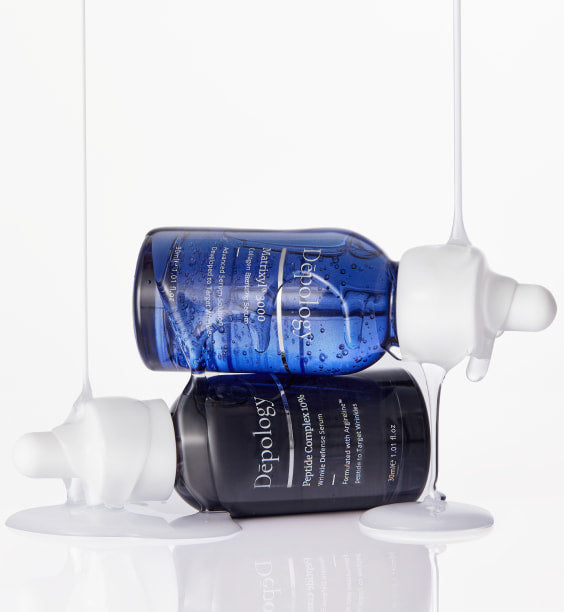
How To Prevent Stretch Marks During & After Pregnancy?
Pregnancy is a miraculous journey filled with anticipation, joy, and a fair share of challenges. As an expectant mother, you're likely experiencing a whirlwind of changes. While the prospect of bringing a new life into the world is undeniably exciting, it also comes with its own set of transformations, some of which are more visible than others. One such transformation that often takes center stage during pregnancy is the appearance of stretch marks.
Stretch marks are a common concern among pregnant women. These lines that appear on the skin can raise questions, insecurities, and sometimes even anxiety. But fear not, because we will delve into the science behind pregnancy stretch marks and provide you with insights that might just change the way you view these marks of motherhood.
Are stretch marks genetic?
Some people may be more genetically predisposed to developing stretch marks. If your parents or close relatives have had stretch marks, you might be more likely to develop them as well.
While stretch marks can have a genetic component, they are not solely determined by hereditary factors. They can also be influenced by:
Hormones: Hormonal changes, such as those that occur during puberty, pregnancy, or when using certain medications (like corticosteroids), can increase the likelihood of stretch marks. Hormones play a significant role in the elasticity of your skin.
Rapid Growth or Weight Changes: Stretch marks often occur when the skin is stretched quickly due to rapid growth (during adolescence) or significant weight gain/loss. The skin may not have enough time to adapt, leading to the formation of stretch marks.
Skin Type: Different skin types have varying degrees of elasticity. Some individuals naturally have more elastic skin, which can reduce the likelihood of stretch marks.
Collagen Production: Collagen is a protein that helps maintain skin's elasticity. A decrease in collagen production with age can make the skin more prone to stretch marks.
Lifestyle Factors: Smoking, lack of exercise, and excessive sun exposure can damage the skin's collagen and elastin fibers, making it more susceptible to stretch marks.
How common are stretch marks during pregnancy?
A significant percentage of pregnant individuals develop stretch marks, making them a common condition. The exact prevalence varies among individuals, but some estimates suggest that up to 90% of pregnant women experience stretch marks to some degree.
While several conditions can influence the likelihood and severity of stretch marks, women carrying twins, triplets, or multiples are more likely to develop them post-partum. This is a result of the greater strain on the skin during pregnancy.
When do stretch marks appear during pregnancy?
Stretch marks during pregnancy can appear at different times for different individuals, and they vary based on factors such as genetics and skin type. However, they most commonly start to develop during the second trimester, which is roughly around weeks 13 to 21 of pregnancy.
In the early stages of pregnancy (the first trimester), the body is still adjusting to hormonal changes, and there is minimal weight gain. Stretch marks are less likely to appear during this time. The second trimester is when many women notice the first signs of stretch marks. As the baby begins to grow more rapidly, the abdomen starts expanding, and the skin may start to stretch, leading to the development of stretch marks.
During the third trimester, stretch marks may continue to develop and become more pronounced. As the baby continues to grow, the skin stretches further. These marks most commonly appear on the breasts, hips, thighs, and buttocks.
While the second trimester is a common time for stretch marks to appear, they can develop at any point during pregnancy. Some women may not notice stretch marks until after giving birth when the skin begins to retract, or they may continue to develop in the postpartum period.
What symptoms come with stretch marks?
Stretch marks themselves do not typically cause symptoms that are physically uncomfortable or painful. However, they can be associated with some emotional distress or self-esteem issues due to their appearance. Here are the common symptoms or characteristics of stretch marks:
Visible Lines: The most obvious symptom of stretch marks is the appearance of thin, often parallel lines on the skin. These lines can vary in color from pink, reddish-brown, dark brown, or even purplish, depending on the person's skin tone and the age of the stretch marks.
Texture Changes: Stretch marks often have a different texture than the surrounding skin. They might feel slightly raised or indented and can sometimes be itchy.
Location: Stretch marks commonly occur on areas of the body where the skin has been stretched, such as the abdomen, hips, thighs, buttocks, breasts, and upper arms.
Color Changes Over Time: Initially, when stretch marks form, they may be red or purple due to inflammation. Over time, they often fade to a lighter color, becoming less noticeable. However, they typically don't completely disappear.
While stretch marks are typically harmless and don't require medical treatment, some people choose to explore cosmetic procedures such as laser therapy or microdermabrasion to reduce their visibility. If you have concerns about your stretch marks, medical professionals can advise treatment options and strategies for managing their appearance.
How can I prevent loose skin after pregnancy?
While it may be challenging to completely prevent stretch marks after pregnancy, there are steps you can take to minimize their development and appearance:
Moisturize Regularly: Applying a moisturizer or lotion to your skin, especially areas prone to stretch marks like the abdomen, breasts, hips, and thighs, can help keep the skin supple. Look for products that contain ingredients like cocoa butter, shea butter, or vitamin E.
Balanced Diet: Staying hydrated and eating a nutritious diet that supports skin health and suppleness is crucial. Foods rich in vitamins A and C, zinc, and protein can help maintain the skin's elasticity. Collagen-boosting foods like bone broth may also be beneficial.
Gradual Weight Gain: Try to manage your weight gain during pregnancy. Gradual, steady weight gain can reduce the risk of rapid stretching of the skin, which is a common cause of stretch marks.
Exercise: Regular exercise can help tone your muscles and maintain overall health. However, consult with your healthcare provider before starting or continuing an exercise routine during pregnancy.
Topical Treatments: Some over-the-counter creams and oils claim to prevent or reduce the appearance of stretch marks. While their effectiveness can vary, they may provide some benefit in keeping the skin moisturized. Consult your healthcare provider before using any topical treatments during pregnancy.
Avoid Scratching: Itchy skin is common during pregnancy, but scratching can worsen stretch marks. Gently moisturize the itchy areas and use loose-fitting, comfortable clothing to minimize irritation.
What is the best oil for a pregnant belly?
There are several oils and creams that pregnant individuals commonly use to moisturize and care for their skin during pregnancy to help reduce the likelihood of stretch marks and alleviate itchiness. The choice of oil can vary depending on individual preferences and skin sensitivities:
Coconut Oil: Many people find coconut oil to be an effective and natural moisturizer. It's rich in fatty acids and has a pleasant scent. However, some individuals with sensitive skin may experience irritation, so it's essential to do a patch test first.
Sweet Almond Oil: Sweet almond oil is a gentle and hypoallergenic option. It's rich in vitamin E, which can help nourish the skin and reduce the appearance of stretch marks.
Jojoba Oil: Jojoba oil is similar to the skin's natural oils, making it well-tolerated by most skin types. It's known for its moisturizing properties and can help keep the skin supple.
Argan Oil: Argan oil is rich in antioxidants, vitamin E, and essential fatty acids. It can help with skin elasticity and hydration.
Olive Oil: Olive oil is readily available and contains vitamins and antioxidants that can benefit the skin. It's a good option for those who prefer a natural remedy.
Aside from being aware of particular skin sensitivities, consistency is key. Applying the chosen oil or moisturizer regularly, especially after showering when the skin is damp, can help maintain skin hydration and elasticity.
What are the best creams for stretch marks?
Many creams and topical products are available to help reduce the appearance of stretch marks or prevent them from forming. The effectiveness of these creams can vary from person to person, and similar to oils, consistency is required to achieve the desired results:
Tretinoin (Retin-A): This prescription cream, which contains retinoids, is sometimes used to treat older, established stretch marks. It works by promoting collagen production and skin cell turnover. However, it should not be used during pregnancy.
Hydroxy Acids: Alpha hydroxy acids (AHAs) and beta hydroxy acids (BHAs) like glycolic acid and salicylic acid can promote skin exfoliation and may help improve the appearance of stretch marks.
Vitamin A: Look for creams that contain vitamin A derivatives like retinol. These can promote collagen production and skin renewal.
Vitamin E: Vitamin E is known for its skin-nourishing properties. It can help improve skin texture and elasticity.
Hyaluronic Acid: Hyaluronic acid is a hydrating ingredient that can help keep the skin moisturized and plump, potentially reducing the appearance of stretch marks.
Peptides: Peptides are small proteins that can help with collagen production and skin repair. Some stretch mark creams contain various peptides.
Silicone-based Products: Silicone-based gels or sheets may help flatten and soften the appearance of mature stretch marks.
Shea Butter: Shea butter is a popular choice for moisturizing during pregnancy. It's rich and thick, providing deep hydration to the skin.
Cocoa Butter: Cocoa butter is another thick and creamy option. It's known for its moisturizing properties and is often used to help prevent stretch marks.
While these ingredients and creams may help improve the appearance of stretch marks, they are not guaranteed to completely remove them. The effectiveness of stretch mark creams can vary, and results may take several weeks or even months to become noticeable. Additionally, the earlier you start using these products on new stretch marks, the more likely they are to be effective.
Conclusion
Stretch marks are a natural response of the skin to rapid stretching, which can occur during pregnancy, growth spurts, significant weight gain or loss, and sometimes due to certain medical conditions or the use of medications like corticosteroids.
While you may not be able to avoid stretch marks after pregnancy, these steps can help reduce their severity and make them less noticeable. Additionally, over time, stretch marks often fade and become less prominent. If you're concerned about stretch marks, discussing prevention and treatment options with your healthcare provider or a dermatologist is a good idea.













